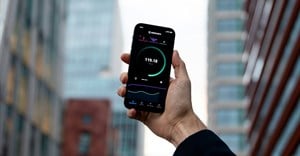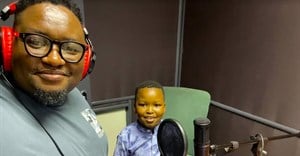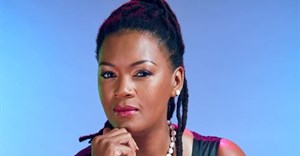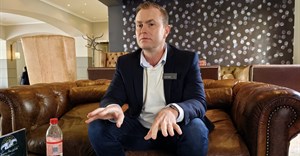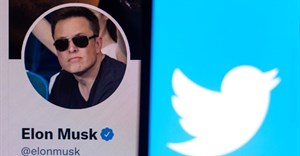Trending
Elections 2024
Jobs
- Cambridge English Lower Secondary Project Manager Paarl
- Science Editors Cape Town
Will Cell C ever dominate as a brand?
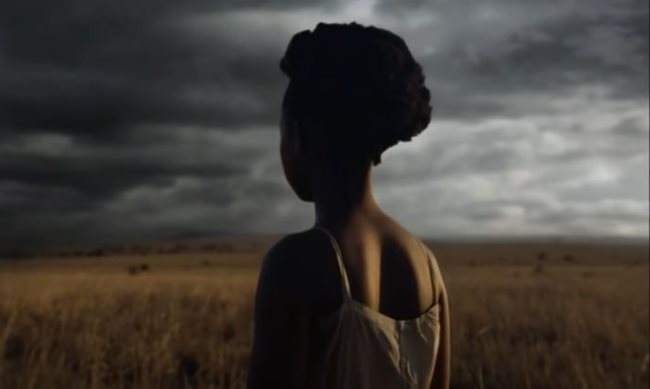
I usually write from one of these two departure points: 1. I am inspired by a strategic issue or 2. I love or have some sort of relationship with a brand (in the form of being a current or ex-customer). In this case, I write about Cell C for both reasons; firstly, there’s a strategic issue that I will address and secondly, I am fond of the brand and I am a customer.
Let’s start with the love I have/had for Cell C and being a customer
Today, I am a contract customer to them. I believe that this may give me insight and perspective into the brand that an agency person, who may alternatively be a customer to Vodacom or MTN, working on the brand, may not have.
My love for Cell C started when they literally revolutionised our relationship with voice prompts. For the first time, voice prompts could be sexy; "Cell C, for yourself" *sultry and sensual voice* (do you remember that? I'm not certain why they changed it but that was the only "robotic voice" that I believe most people were eager to hear).
A disruptor in the market
Without boring you with too much nostalgia, Cell C was one the most disruptive brands when it came to “voice”. We currently live in a data and internet driven world. However, before smartphones, voice or calls was the biggest driver of revenue and Cell C was very competitive. Their unbeatable voice deals had me making very extensive phone calls where the only things I’d run out of, were the energy to stay up and topics to discuss.
Don’t get me wrong, MTN’s “Free Zone” was also competitive and attractive at that time. When my phone reached either 100 or 95%, I’d literally make free phone calls. But at that time; Cell C’s free minute’s product innovation made them true disruptors. It is this disruption that connected not only me, but a lot more other people to the brand. Cell C spoke to people. Cell C made people carry extra sim cards. Whilst many of us were Vodacom or MTN customers, we also had Cell C sim cards either in our wallets or inside the back of our cellphone lids (feature phones were literally smartphones of that era).
Cell C’s campaigns back then were truly great. Whether they were doing promo campaigns (‘mahala’ airtime), brand messaging, or introducing new products, all of their brand marketing efforts collectively resonated and created a magnetic pull towards the brand – more people were choosing and buying from Cell C. They delivered on both the brand and product promises, respectively.
Unintended consequences
I could be wrong, but I think it may have started to fall apart with the Trevor Noah campaign. He is definitely a great guy, but the change may have been truly disruptive from a consistency and familiarity point of view. The brand had undergone a transformation which perhaps made it unrecognisable. Their visual transformation brought about the end of all the equity and distinctive assets amassed over the years. This may have been the genesis of the brand’s downfall.
I still don’t know why Cell C decided to go corporate. I wonder if they wanted to compete with Vodacom and MTN, and in the process lost themselves.
Rumour has it, the real reason for the transition from Red to Black was due to Vodacom’s imminent rebranding from Blue to Red, and so Cell C had to make way for Vodacom’s global alignment with Vodafone. Perhaps they also wanted to go premium and compete for Vodacom and MTN’s premium audience. Either way, the rebrand may have had unintended consequences, which cost them dearly.
Cell C was a true challenger to the category’s twin Goliaths, Vodacom and MTN. They had the campaigns, the ambassadors (Zola 7), the Cell C sultry voice, the dots that made the letter ‘C’, the red, the products, and promotions that made sense. Their product offerings were designed with the customer in mind. They knew the customer inside-out.
Is Cell C telling the right narrative?
Today, Cell C remains a challenger brand. I’m not sure if that is a good thing. What is the criteria for being a challenger brand? How much time does a brand need to transition from being a challenger to being a big player? Is this a thing? Where a brand is a challenger brand forever? It definitely feels like Cell C has been challenging since its inception. In 2021, the brand is internally referred to as a challenger brand.
I hope that with this repositioning, Cell C is on its way to become a big player that is competitive and most importantly, more profitable.
The new TVC, from a narrative perspective, reminds me of the TVC done by VW for the T-Roc. Which tells the story of South Africa's first black female combat pilot, Major Mandisa Mfeka’s battle against stereotypes to assert her position in the sky.
The two brands seem to have been fishing from the same pond. They both caught the same fish. Ideally, this should be avoided, and one of the best ways to avoid telling similar stories is to ensure that the insights are truly strong and unique. For two brands in different categories to tell a similar story is definitely something that should be somewhat technically impossible, but it happens.
The two brands have different problems, different strategies, and different objectives, but for some reason, the storytelling canvas or formula is similar. It may be what the industry refers to as “The Zeitgeist”.
Is Cell C telling the right narrative? As a brand that is looking to be competitive from a performance perspective, I wonder if the story they chose to tell is the right one for them. Don’t get me wrong, the story of sexism, gender inequality, gender stereotyping, ensuring that women are given opportunities and self-belief from a none-male perspective is important, but I wonder if this is the right thing for Cell C to talk about.
Gender equality or lack thereof is a societal issue (hence the TVC script says; “In a world that says that you can’t, it is up to you to change it”), which is therefore not surprising that Cell C and VW end up telling the same story, just through different contexts, but the take out is the same.
In Cell C’s case, apart from the fact that in these types of stories, the benchmark that women compete towards is ‘men’; it reminds me of the work done by Always – “Like A Girl” and Under Armour – “I will What I Want”. I suppose the idea of “Change Your World” is broad, and perhaps the brand decided to tell their story informed by the globe and cultural movement that is happening.
The “Change Your World” story could have been told from a plethora of perspectives, but they chose what I’d refer to as the expected route, which is why VW has a similar story - it is expected. But...
There’s more to this repositioning than meets the eye
Apart from having a similar narrative to VW, Cell C’s intentions are much deeper than just telling good and emotive stories. In an article and interview by Carey Finn, Simo Mkhize, Cell C’s chief commercial officer, outlines the following: “Cell C plans to launch a number of innovative services offerings that go beyond data packages”.
Cell C is definitely planning to change a lot of things internally and are hopeful that those will then translate in a positive way externally. The idea is that If Cell C first changes its ways, this may have a positive turnaround effect for them, and in the process, their products and services can be helpful to people who are also seeking to change their worlds.
If that is the case, perhaps the brand TVC could have told the “Change Your World” story from a different perspective, but one that is relevant to the business challenge. The story is beautiful, but from a strategic perspective, it feels slightly far removed from the brand’s intention. It doesn’t necessarily set the brand up to properly reposition itself.
The brand TVC feels like it sits alone at the top, and it is being used as a teaser until the real brand repositioning story is produced or shared. What I mean by this is that the TVC has no product mention, does not speak to any services, it doesn’t speak to the strategic intent of being more customer centric as per Simo Mkhize’s comments. I also do get the logic of doing “brand” first, but this execution adds an extra layer before getting to the intended message.
The brand TVC feels like a set-up for another big brand TVC that’s in the pipeline. Cell C’s position in the market and the inherent business challenges do not allow them the luxury of taking too long to unpack the intent of “Change Your World”. I have no doubt that as the campaign rolls out, products and services will be weaved into the brand building exercise, but it does feel like this TVC was the perfect opportunity to do the brand and business job simultaneously.
When looking at the TVC and listening to Simo, it is logical to conclude that the brand TVC needed to build a strong business case for Cell C. When looking at the TVC, it is a beautiful story, but I’m not sure if it sets up or frames Cell C as a competitor that’s looking to be aggressive in the market.
Obviously, I speak from an outsider’s perspective or viewpoint, but if what Mkhize said is correct about the strategic intent, and they are truly planning to once again be disruptive and “customer-centric”, then the current TVC doesn’t do justice nor does it carry the strategic sentiment of the business.
Brand building is about making choices, and I am certain that there were other routes and options explored, but ultimately landed on this execution.
I just want the best for Cell C
My rose-tinted experience with the brand from back in the day, and still being their customer today may be biased. Apart from the nostalgia however, I also have a default affinity towards challenger brands and underdogs, and right now, Cell C is one. I’m therefore going to naturally support the brand.
I don’t know about you, but it feels like Cell C needed a different brand story. The “Change Your World” strapline and positioning can only be as strong as the resultant executions. Positioning statements and slogans, I believe, generally, have no inherent meaning, it is the work that accompanies the brand promise that creates meaning and connection.
I guess it is only a matter of time until we see “Change Your World” as a true game changer, or will it just be another “Trevor Noah” exercise that is not carried through effectively across all the different touch points?
I know Cell C has a ‘take a girl child to work’ initiative, and maybe that’s how the TVC was influenced or inspired. But I genuinely don’t think gender equality storytelling is where Cell C should be investing, especially with their kind of challenges. Unless the plan is to tackle gender inequality and women empowerment in the long-term. If that is the case, I therefore look forward to seeing how the brand plans to support women with their dreams.
If there are no future plans (which Mkhize did not mention in the interview I referred to earlier, apart from the line; “Cell C will change your world by using connectivity to change your life: connect, share, inspire, start a business etc.” – starting a business is what women do – so this is the only thing that could link back to women empowerment, albeit implicitly so) to support women by helping them change their ways for the better, this further emphasizes my point of strategic misalignment. This is what I would call a STE (Strategic Technical Error).
In conclusion
In reflection of Cell C’s continuous change to their brand identity, voice, tone, positioning, messaging and propositions over the years, I wonder if it would have been worthwhile to tap into all of those previous assets and nostalgia in some shape or form. To almost borrow from their own equity. The same way Cremora occasionally references the iconic line and campaign, “It’s not inside, it’s on top” in some of their recent campaigns.
What if Cell C had tapped into their rich history and heritage, to find something iconic and memorable? Something that draws on the nostalgia to remind people of what they are capable of?
In the process, bring in the product, service and customer centricity story in there.
Obviously, I speak without any sight into the brief, and therefore, the brief may have been very well answered. But eish, maybe the brief needed to be slightly different? Maybe the “ask” should have been different? As mentioned above, the focus is on “Change Your World” (and not necessarily the female football coach story) it therefore means that the brand could tell this new positioning story from any perspective that is unexpected.
I am interested to find out how the “Change Your World” campaign will translate into the business and customer experience world. As a Cell C customer, I am very much keen to see how the brand changes my world, because at the end of the day, that’s what it is all about.
I also hope “Change Your World” will last long enough to be as iconic as “How can we help you?” It is this constant change in brand assets that creates a less sticky brand. By being consistent, building memory structures, and delivering or exceeding customer expectations, that’s how they will dominate.
I’ve always been of the view that it is not the pay-offline or slogan that makes the brand, it is everything that is meaningful that the brand does, that gives a slogan value, power and equity. Meaning, the only way Cell C can genuinely change anyone’s world, including theirs, is through experience.
What are your thoughts?












